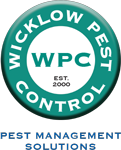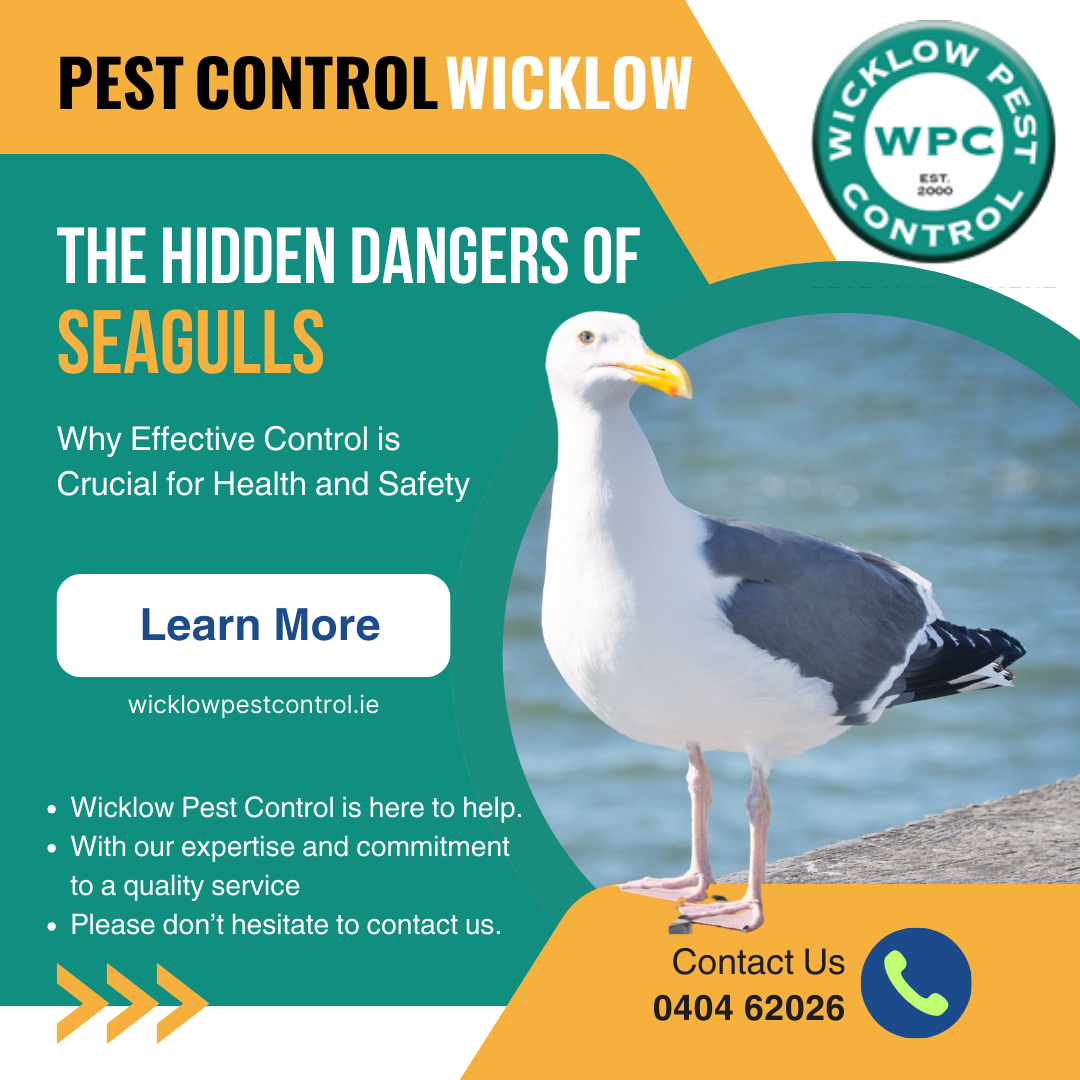Seagulls are often viewed as a pleasant part of coastal living, soaring above the sea and providing a natural backdrop to beaches and harbours. However, behind this seemingly peaceful image, seagulls can pose serious health and safety risks, especially when they come into close contact with urban areas, businesses, and homes.
We will explore the lesser-known dangers of seagulls and why implementing an effective control plan is essential for protecting your health, safety, and property.
Understanding the Threat: Health Hazards from Seagulls
Most people don’t realise the health risks posed by seagulls. While these birds seem harmless, their habits and behaviours can lead to serious health concerns.
1. Disease Transmission
Seagulls are known carriers of harmful bacteria, parasites, and viruses that can affect humans and pets. Common diseases spread by seagulls include:
E.coli: This bacteria is often found in seagull droppings and can lead to severe gastrointestinal illness if humans come into contact with contaminated surfaces or water.
Salmonella: Seagull droppings are a known carrier of salmonella, a bacteria that can cause food poisoning. This is particularly dangerous near restaurants, outdoor eating areas, and water sources.
Psittacosis: Parrot fever is transmitted through contact with infected bird droppings and can cause flu-like symptoms, respiratory issues, and, in severe cases, pneumonia.
Campylobacter: Another bacterial infection found in bird droppings, campylobacter can lead to diarrhoea, stomach cramps, and fever in humans.
2. Contamination of Water Sources
Seagulls often congregate near water sources such as ponds, lakes, and fountains in urban environments. Their droppings can contaminate these water sources, leading to bacterial outbreaks that may affect wildlife, pets, and humans. In some cases, contaminated water can spread illness if used for drinking or irrigation in nearby gardens.
3. Food Safety Risks
Seagulls are opportunistic feeders, scavenging for food in public places, landfills, and outdoor dining areas. Their presence around restaurants and food-processing facilities poses a significant risk to food safety. Seagulls often land on tables, food preparation surfaces, and trash bins, spreading harmful bacteria and creating unhygienic conditions. Without proper control measures, businesses in the food industry could face serious health violations and legal consequences.
Safety Hazards: The Aggression of Seagulls
Seagulls are not just a health risk; they can also become a serious safety concern, particularly during their nesting and breeding seasons. Their aggressive behaviour can lead to injuries and accidents, especially in busy public areas.
1. Attacks on People
During nesting season, seagulls become highly territorial and protective of their young. They are known to swoop down on humans, often targeting people who unknowingly walk near their nests. These attacks can cause injuries, particularly if people fall or panic in response. This is especially concerning in areas like parks, shopping centres, schools, and hospitals with high pedestrian traffic.
2. Disruption in Public Spaces
Seagulls can create safety risks in public spaces near airports and harbours. Their presence can interfere with air traffic, leading to dangerous situations such as bird strikes, which can damage aircraft and endanger passengers. Similarly, seagulls near harbours and ports can disrupt shipping operations as they flock to food waste left behind by fishing vessels and cargo ships.
3. Property Damage Leading to Safety Hazards
Seagulls’ nesting habits can cause structural damage to buildings, especially when they nest on rooftops, chimneys, and drainage systems. The build-up of nests and droppings can block gutters and drainage systems, leading to water damage and leaks. This can cause significant safety hazards in commercial buildings, such as slippery surfaces from bird droppings or mould growth due to water damage.
Why Seagulls are Hard to Control
Seagulls pose such a problem because of their adaptability and intelligence. These birds can learn to avoid certain deterrents. In many areas, they are protected under wildlife conservation laws, making it difficult to remove them, or their nests, without proper permission.
Some of the challenges in seagull control include
Urban Adaptation: Seagulls have adapted to city environments with scarce food and natural predators. They are drawn to landfills, food markets, and outdoor dining areas, making them hard to deter once they find a reliable food source.
Protected Status: Seagulls are protected under local and national wildlife laws. This means that without a proper license, disturbing their nests, eggs, or young is illegal. Property owners must be careful not to violate these regulations when implementing control methods.
Effective Seagull Control Solutions
Despite the challenges, several humane and effective methods exist to control seagulls. Here are some proven solutions:
1. Bird Netting
Bird netting creates a physical barrier that prevents seagulls from accessing vulnerable areas such as rooftops, courtyards, and loading docks. This long-lasting and discreet solution provides year-round protection against seagulls and other birds.
2. Bird Spikes and Wires
Bird spikes and wires can be installed on ledges, windowsills, and other perching areas to prevent seagulls from landing and nesting. These deterrents are effective and non-harmful, making them popular for residential and commercial properties.
3. Ultrasonic Deterrents
Ultrasonic devices emit high-frequency sounds that irritate seagulls but are inaudible to humans. These deterrents are ideal for larger properties, such as airports, warehouses, and parking lots, where constant monitoring of bird activity is needed.
4. Falconry Services
In some cases, professional falconry services can be used to scare away seagulls. Trained birds of prey are released into the affected area, where their presence naturally deters seagulls from settling. Falconry is particularly effective in large outdoor areas such as parks, stadiums, and landfills.
5. Professional Seagull Control Services
For businesses and property owners dealing with significant seagull problems, hiring a professional pest control service is often the most effective solution. These experts can assess the situation, install long-term deterrents, and ensure compliance with local wildlife protection laws.
Seagulls are more than just a noisy nuisance—they can pose serious health and safety risks to humans and properties. From spreading disease to causing injuries and property damage, these birds require a proactive approach to control. By understanding the dangers they bring and implementing effective control measures, you can protect your property and ensure the safety of those around you.
Don’t wait until seagull problems escalate—take action today to safeguard your health and property.
Wicklow Pest Control is here to help. With our expertise and commitment to a quality service, please don’t hesitate to contact us.
Wicklow Pest Control is here to help. With our expertise and commitment to a quality service, please don’t hesitate to contact us.
Wicklow: 0404 62026
Dublin: 01 2005900
Kildare: 045 395395

